Poor old parsley sauce. As someone who writes regularly about old-fashioned food, it often feels that we are living through a golden revival of vintage dishes. You can’t move for cookbook concepts pinned on comfort and nostalgia or restaurants attempting to take the diner on some kind of Proustian journey. Whether it’s nursery food, school dinners, classical bistro French cooking, hyper-regional food, or the polarizing “reinvention” of any of the above, old-fashioned ingredients are in vogue again. In trendy restaurants menus are littered with rabbit, offal, marmalade, boozy prunes; with steamed suet puddings (sweet and savory), duck à l’orange, prawn cocktails, rice pudding, hand-raised pies… Ten years ago, deviled eggs were naff. Not now.
It’s not a sauce that shouts. That’s why it’s often served with big, ballsy flavors like smoked ham
So where is the parsley sauce? A fixture of British cooking from the Middle Ages through to the 1980s, once beloved on both fish and ham, it is scarcely to be seen. If it exists anywhere, it is in the few remaining pie and mash shops in London, where it is called “liquor,” and traditionally made with the stewing liquid from cooking the eels.
But elsewhere it is largely overlooked. It doesn’t have the gloss of a sauce Bordelaise or the zip of the Seville orange-heavy sauce Bigarade. Perhaps the return to the old school is a return to punchy flavors, and that accounts for our failure to remember parsley sauce’s subtle charms.
I used to loathe parsley, especially the curly stuff, which is what is traditionally used in a parsley sauce. When we went on vacation to France as fussy, awkward children, my dad had to request every dish to be served “sans persil” to prevent his ungrateful offspring rejecting whatever was put in front of them if there was a decorative sprig or scatter. By the end of the holiday, my sister and I would chant “sans persil, sans persil” whenever we ate. What a nice vacation that must have been for my parents. Parsley’s only other appearance in my childhood was in boil-in-the-bag cod dishes, where convenience was prioritized over flavor or texture.
Things have changed, thankfully, and now I understand parsley’s appeal, with its clean, green, slightly peppery taste. It makes sense in a mild, creamy sauce, bringing a fresh earthiness.
Parsley sauce is a traditional English sauce, a totally different beast from persillade, the verdant, garlic-heavy French version that you might find served with snails or oysters. Parsley sauce is a simple buttery bechamel infused with onion and bay. A generous handful of finely chopped curly parsley is added at the last moment, which turns the whole thing a very pale green. Its color, its texture and its flavor are all gentle. It’s not a sauce that shouts. It’s often served with big, ballsy flavors such as smoked ham, although it can cope with fish and other less domineering dishes too — it’s beautiful with vegetables or boiled baby potatoes.
I’ve chosen to pair it with ham here, as the contrast between the sweet, mustard-glazed smoked ham and the mellow sauce is particularly lovely. I won’t apologize for the excess of ham: it cooks far better in large quantities, as it’s less likely to dry out and will yield bigger, more satisfying slices. And there are fewer nicer excesses to be stuck with than leftover roast ham. But if this doesn’t fit with your plans, or you’re looking for a fast supper (and the sauce itself is very quick to make), you can of course buy roasted and sliced ham, rather than making your own. If you are roasting your own, you can serve the ham straight from the oven, but if not I like it brought back to life in a dry frying pan, heating through until the fat that ripples along at the edge of the meat renders, turning golden and crisp.
Serves 4
Takes 20 minutes
Cooks 2½ hours
For the ham
- 4 lbs boned, smoked ham
- 70 oz cider
- 2 tbsp Dijon mustard
- 2 tbsp muscovado sugar
For the sauce
- 17 fl oz whole milk
- ½ onion
- bay leaf
- ⅓ cup flour
- ⅓ cup butter
- A generous handful of chopped curly parsley
- Place the ham in a saucepan in which it will comfortably fit and add the cider. If the ham is not submerged, top up with water. Bring up to a simmer, reduce to the lowest heat, place a lid on the pan, and cook for two hours
- Heat the milk with the onion and bayleaf until it is simmering, then remove from the heat, and set to one side for thirty minutes to infuse. Strain the infused milk through a sieve
- Preheat the oven to 400°F. Remove the cooked ham from the pan and carefully pare away the rind, leaving a layer of fat. Score the fat in a dense diamond pattern, and roast the ham for twenty minutes. Briefly remove it from the oven and paint the scored fat with the Dijon mustard, and sprinkle it with the sugar. Return to the oven for ten minutes. Once it’s ready, cut into slices of medium thickness
- Just before you serve up, make the parsley sauce. Melt the butter in a saucepan over a medium heat, and stir in the flour. Cook, stirring, until the mixture starts to sizzle on the bottom of the pan, then add the infused milk a little at a time, whisking until smooth with each addition. Once all the milk is in, season with salt and add the parsley, stirring through. Spoon generously over the sliced ham and serve immediately
This article was originally published in The Spectator’s UK magazine. Subscribe to the World edition here.



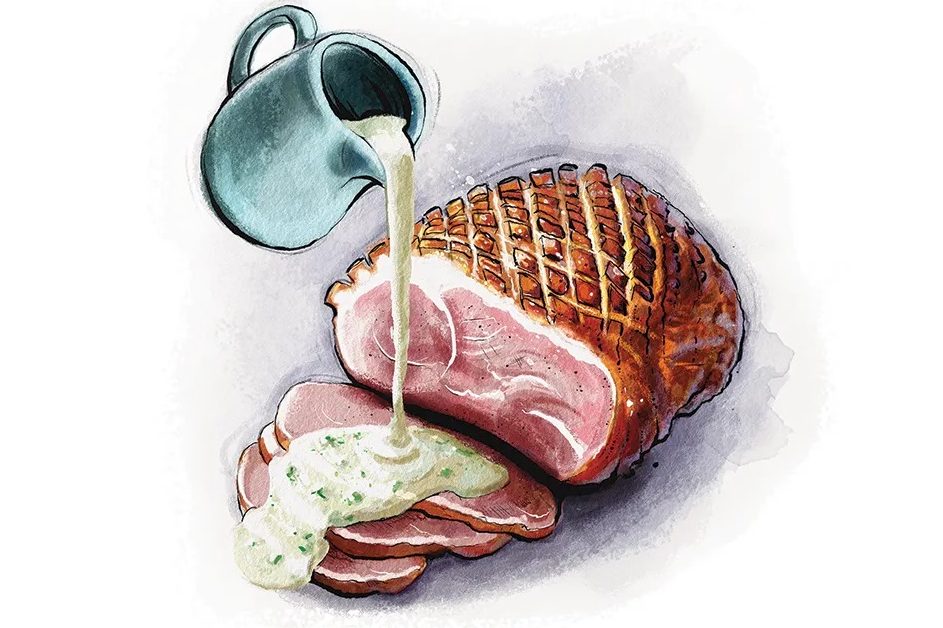








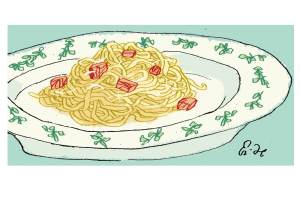

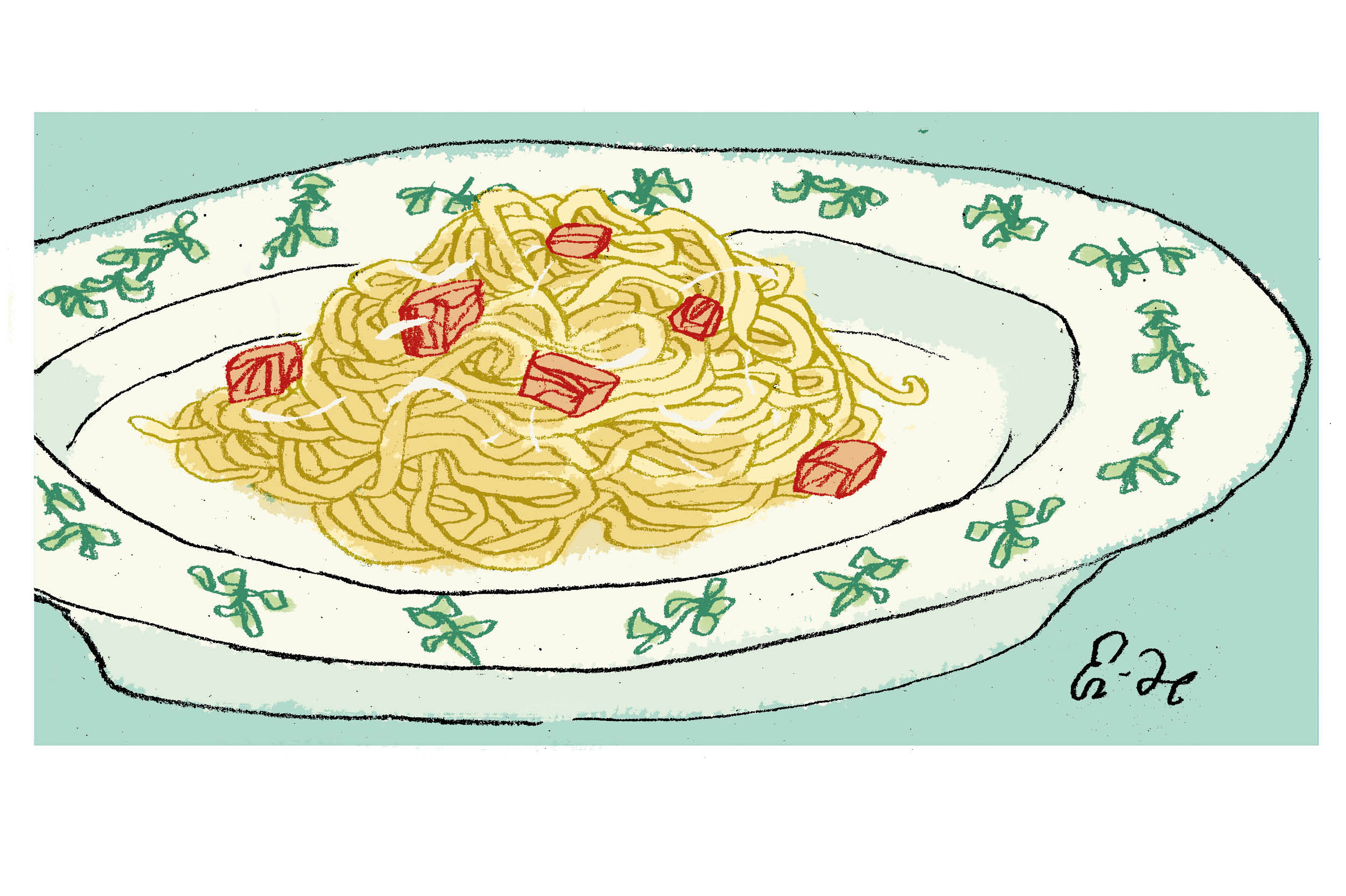
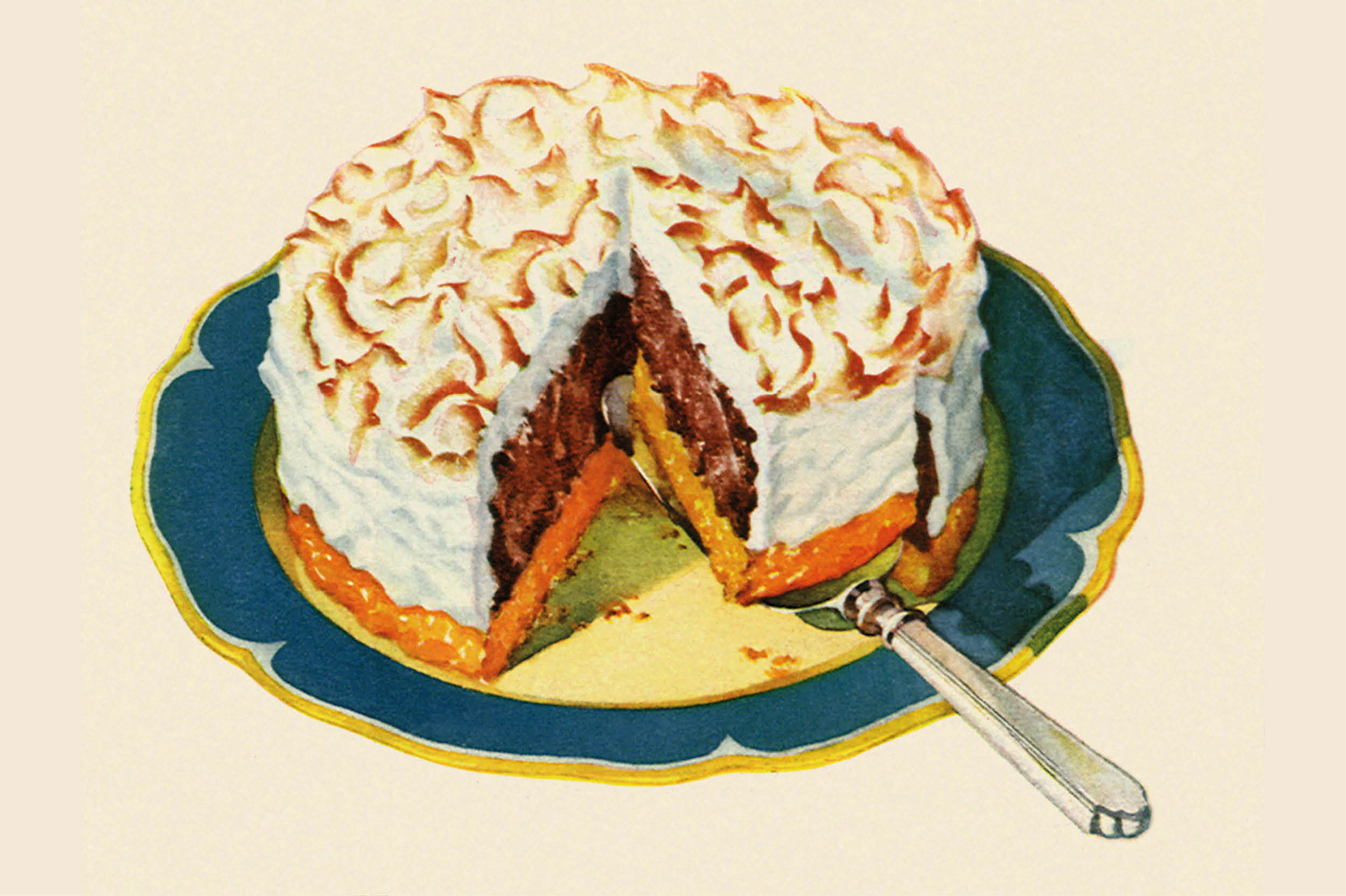

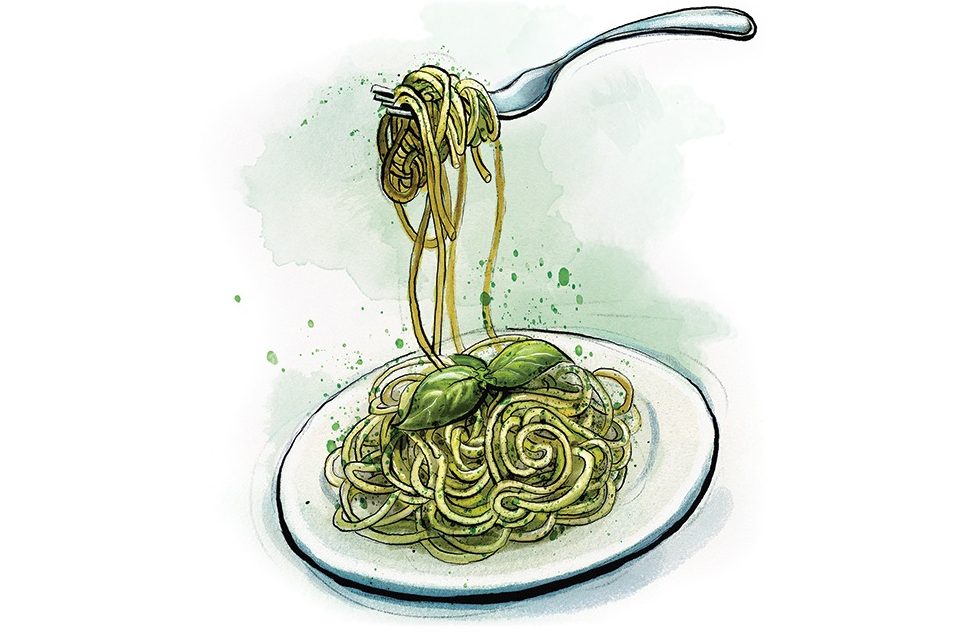








Leave a Reply